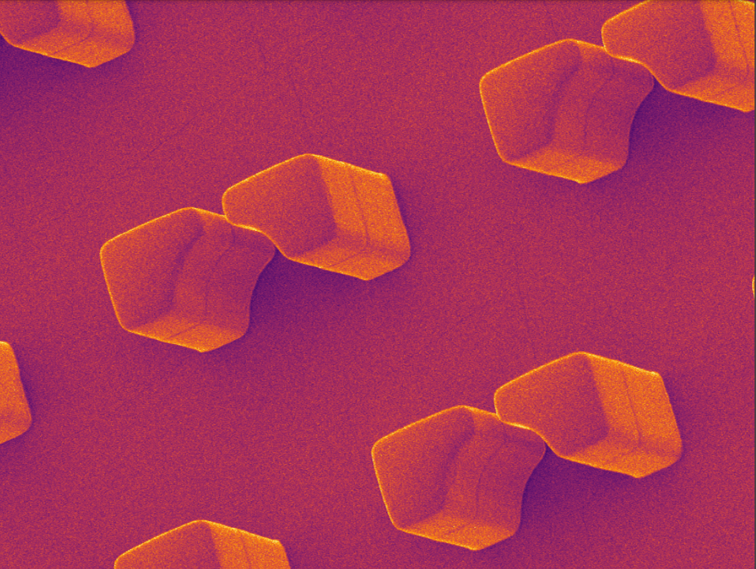Doctoral candidate Aswin Muralidharan was able to introduce DNA into cells without rupturing them using electric shocks. This technique could be interesting for gene therapy.
Aswin Muralidharan: “For a medical treatment, however, we shall have to scale up the design.” (Foto: Margerita Tavasso)
We are all familiar with administering an electric shock to restart a heart. But electric pulses are also useful for much finer work, such as the microscopic manipulation of cells. Given the interest in gene therapy, doctoral candidate Aswin Muralidharan (Applied Sciences, Chemical Engineering) developed a technique to open several cells concurrently and introduce pieces of DNA. He defended his dissertation on 26 October 2022.
Torn to shreds
The greatest challenge with administering medicine to cells is opening the cell membrane and then closing it again without killing the cell. The membrane protects the interior of the cell, while also providing a barrier to medicines.
An electrical pulse can briefly open the membrane. But if it is too strong or administered for too long, the pulse can tear the cell to shreds. “Especially if you are working on several cells at the same time, it is difficult to securely open each individual cell with a pulse, without losing some of the cells,” explained Muralidharan.
That was the impetus for him to look for a way to affect several cells with this technique, called electroporation, while keeping them alive. Muralidharan added, “Only when we can do this for several cells concurrently will this technique become interesting for gene therapy, for example.”
Hundred thousand cells
Muralidharan developed a microfluidic design to capture cells in tiny traps while at the same time opening a small gap in them. With the traps the electrical pulse reached only a small part of the cell, which made only a few micrometers of the cell membrane permeable for the medicine.

A photo of the traps, taken with Scanning Electron Microscopy (Source: Aswin Muralidharan)
In this way, Muralidharan managed to inject at least 50 cells concurrently within a few seconds, and almost all of the cells survived. This is a first step towards the large-scale treatment of cells with electrical pulses. “For a medical treatment, however, we shall have to scale up the design to be able to treat a hundred thousand cells very quickly,” affirmed Muralidharan.
Immune cells
During his doctoral research, Muralidharan introduced pieces of DNA into model cells. One experiment approached the realm of ex vivo gene therapy. In this form of gene therapy, a patient’s cells are modified outside the body to attack the body’s own diseased cells, and then they are replaced in the patient. “If we truly want to use this technique for that purpose, then we have to first test whether this works for the specific cells of the medical treatment,” said Muralidharan.
There is still a long way to go to achieve this goal as the research is still limited to the laboratory for now.
Dayinta Perrier / Freelance redacteur



Comments are closed.